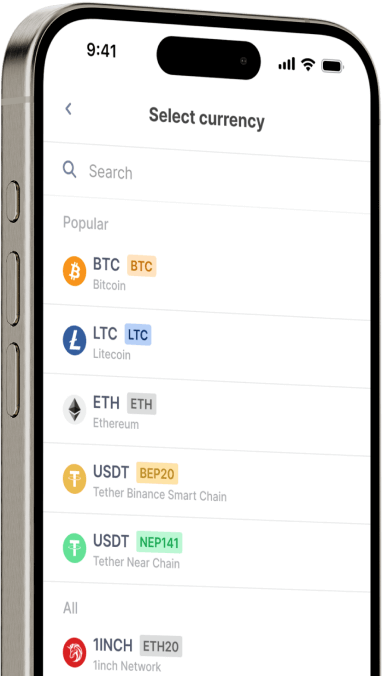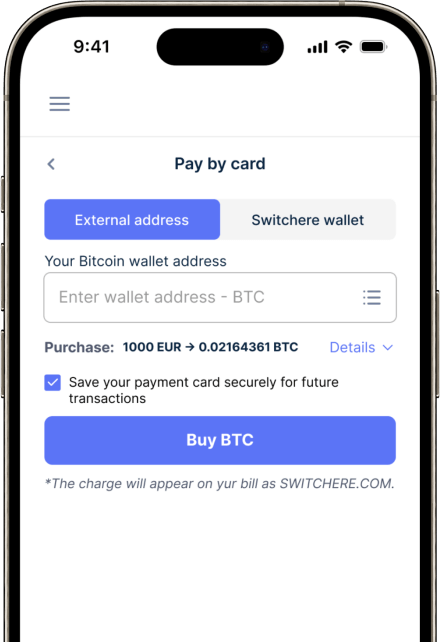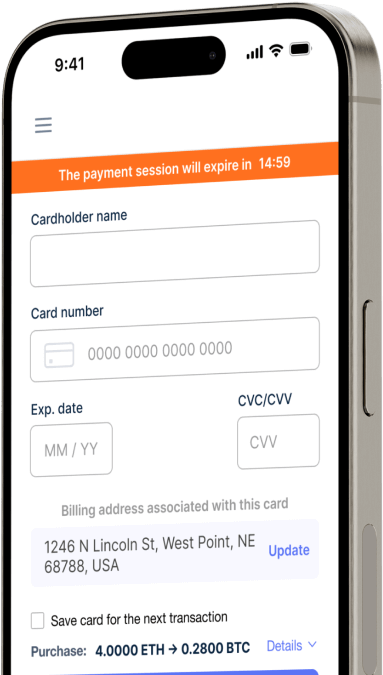Convert
Euro (EUR) to Radix (XRD) Instantly
Purchase Radix (XRD) with Euro (EUR) easily at Switchere and benefit from fast, secure transactions.
About
Radix (XRD)
Radix (XRD) is a specialized Layer 1 blockchain technology platform meticulously engineered to serve as the foundational infrastructure for the decentralized finance (DeFi) ecosystem. Its primary purpose is to overcome the critical challenges of scalability, security, and developer experience that have hindered mainstream DeFi adoption on other decentralized networks. Radix aims to provide a secure and intuitive environment for building and deploying powerful DeFi applications without the common exploits or complexities associated with traditional smart contract development.
At its core, Radix features the unique Cerberus consensus mechanism, designed for linearly scalable atomic composability across an unlimited number of shards. This enables complex DeFi transactions to maintain their "all or nothing" integrity even when spanning multiple shards. A key distinguishing feature is Scrypto, an asset-oriented programming language built specifically for DeFi, which simplifies the creation of secure digital assets and DeFi protocols. The Radix Engine, its execution environment, ensures predictable transaction outcomes and safeguards against common vulnerabilities.
The XRD token is the native utility token of the Radix Public Network. It is essential for network operations, primarily used for paying transaction fees and participating in staking to secure the decentralized network via its Delegated Proof-of-Stake (DPoS) system, thereby earning staking rewards. Radix positions itself as a robust, developer-friendly Web3 infrastructure, aiming to accelerate the growth and innovation of DeFi applications by providing a secure and scalable on-chain environment tailored for financial use cases.
Buy Other 150+ Cryptocurrencies for Euro (EUR)
Other Coins for Euro (EUR)
-
EUR to ZRX
-
EUR to 1INCH
-
EUR to AAVE
-
EUR to ACH
-
EUR to ALGO
-
EUR to TLM
-
EUR to ANKR
-
EUR to APE
-
EUR to NFT
-
EUR to API3
-
EUR to APT
-
EUR to ARPA
-
EUR to AUDIO
-
EUR to AVAX
-
EUR to AVAX
-
EUR to AXS
-
EUR to BADGER
-
EUR to BAL
-
EUR to BNT
-
EUR to BAT
-
EUR to BNB
-
EUR to BSW
-
EUR to BSV
-
EUR to BLUR
-
EUR to BONE
-
EUR to CTSI
-
EUR to CELR
-
EUR to CELO
-
EUR to CEL
-
EUR to LINK
-
EUR to CHZ
-
EUR to CHR
-
EUR to C98
-
EUR to COMP
-
EUR to CFX
-
EUR to PEOPLE
-
EUR to CVX
-
EUR to ATOM
-
EUR to CTC
-
EUR to CRV
-
EUR to DAI
-
EUR to DASH
-
EUR to MANA
-
EUR to DENT
-
EUR to DGB
-
EUR to DYDX
-
EUR to XEC
-
EUR to EOS
-
EUR to ETC
-
EUR to ENS
-
EUR to ETHW
-
EUR to FET
-
EUR to FIL
-
EUR to FLOKI
-
EUR to GALA
-
EUR to GNO
-
EUR to ONE
-
EUR to HBAR
-
EUR to HOT
-
EUR to HOOK
-
EUR to ICX
-
EUR to ILV
-
EUR to IMX
-
EUR to INJ
-
EUR to ICP
-
EUR to IOST
-
EUR to IOTX
-
EUR to JASMY
-
EUR to JST
-
EUR to KAVA
-
EUR to KCS
-
EUR to KSM
-
EUR to KNC
-
EUR to LDO
-
EUR to LQTY
-
EUR to LPT
-
EUR to LOOKS
-
EUR to LRC
-
EUR to LUNA
-
EUR to MKR
-
EUR to MASK
-
EUR to EGLD
-
EUR to ALICE
-
EUR to NEAR
-
EUR to XEM
-
EUR to NEXO
-
EUR to NOT
-
EUR to NMR
-
EUR to OKB
-
EUR to OMG
-
EUR to ONT
-
EUR to EDU
-
EUR to OP
-
EUR to OGN
-
EUR to CAKE
-
EUR to PAXG
-
EUR to PENDLE
-
EUR to DOT
-
EUR to POL
-
EUR to QTUM
-
EUR to QNT
-
EUR to RDNT
-
EUR to XRD
-
EUR to RVN
-
EUR to REN
-
EUR to RSR
-
EUR to RLC
-
EUR to RPL
-
EUR to SFP
-
EUR to SHIB
-
EUR to SKL
-
EUR to SXP
-
EUR to STND
-
EUR to STG
-
EUR to XLM
-
EUR to GMT
-
EUR to STORJ
-
EUR to STMX
-
EUR to SUSHI
-
EUR to SNX
-
EUR to USDT (Polygon)
-
EUR to USDT (AVAC)
-
EUR to USDT (BEP20)
-
EUR to USDT (ERC20)
-
EUR to USDT (SPL)
-
EUR to USDT (NEP141)
-
EUR to USDT (FA2)
-
EUR to USDT (TRC20)
-
EUR to USDT (JETTON)
-
EUR to XTZ
-
EUR to GRT
-
EUR to SAND
-
EUR to TFUEL
-
EUR to THETA
-
EUR to RUNE
-
EUR to TON
-
EUR to TUSD (BEP20)
-
EUR to TUSD (TRC20)
-
EUR to TWT
-
EUR to UOS
-
EUR to UMA
-
EUR to UNI
-
EUR to USDC (Polygon)
-
EUR to USDC (SPL)
-
EUR to USDC (OP)
-
EUR to USDC (BEP20)
-
EUR to USDC (AVAC)
-
EUR to USDC (ARB)
-
EUR to USDC (ERC20)
-
EUR to VET
-
EUR to VRA
-
EUR to WAXP
-
EUR to WOO
-
EUR to WLD
-
EUR to WBTC
-
EUR to WMINIMA
-
EUR to XDC
-
EUR to YFI
-
EUR to YGG
-
EUR to ZIL
How to Buy Radix (XRD)
Frequently Asked Questions
-
How do I begin purchasing Radix (XRD) with Euros (EUR), and what does this digital asset purchase entail?
Purchasing Radix (XRD) with Euros (EUR) typically involves using a reputable cryptocurrency exchange that supports EUR deposits and lists XRD. This digital asset purchase means you are acquiring XRD, the native token of the Radix DLT, a layer-1 protocol designed for secure and scalable DeFi. You'll convert your fiat currency (EUR) into XRD, enabling participation in the Radix ecosystem. Ensure the platform serves as a reliable fiat on-ramp and check its trading volume for XRD.
-
What key considerations, such as KYC/AML compliance and typical Euro payment methods, should I be aware of when acquiring Radix (XRD) with EUR?
Key considerations include mandatory KYC/AML compliance on most regulated exchanges offering EUR to XRD transactions. Common Euro payment methods are SEPA bank transfers, known for their reliability within the Eurozone, and sometimes credit/debit card purchases, though the latter might incur higher fees. Understand the platform's deposit and withdrawal limits for EUR and the security protocols for protecting your Radix network assets. This process acts as your fiat gateway to the Radix ecosystem.
-
When purchasing Radix (XRD) with Euros, what typical fee structures or blockchain transaction processing times associated with Radix DLT should I anticipate?
Fee structures for purchasing XRD with EUR will include exchange trading fees (maker/taker), potential deposit fees for EUR (e.g., for card payments, SEPA is often low-cost), and withdrawal fees for XRD. Once XRD is acquired, Radix DLT blockchain transactions, powered by the Cerberus consensus and Radix Engine, are designed for high throughput and low latency, leading to fast settlement times. Always review the exchange's fee schedule and Radix network status for current processing details and potential XRD staking rewards that might offset costs.
-
What are the common platforms or methods for converting EUR to XRD, especially when looking for a secure cryptocurrency exchange with good liquidity?
Common methods for converting EUR to XRD include utilizing centralized cryptocurrency exchanges that offer direct EUR to XRD trading pairs or allow EUR deposits via SEPA transfer or credit/debit card (Eurozone) for subsequent trading. Look for exchanges with sufficient order book depth and liquidity for the XRD pair. Some platforms might leverage Radix Engine v2 integrations for streamlined asset handling. Always prioritize secure trading environments.
-
What are the strategic benefits of directly acquiring Radix (XRD) using Euros, particularly for engaging with the Radix DeFi ecosystem built with Scrypto?
Directly acquiring Radix (XRD) with Euros (EUR) provides a streamlined entry for European investors into the Radix DeFi ecosystem. This avoids multiple conversion steps and associated fees. XRD is essential for interacting with decentralized applications (dApps), utilizing Radix Components, and benefiting from the atomic composability features offered by its unique consensus mechanism, Cerberus, and the asset-oriented Scrypto programming language. It's an efficient way to access this innovative layer-1 protocol.
-
What are crucial security best practices for managing my digital wallet and executing EUR to XRD transactions securely on the Radix network?
Crucial security best practices include using strong, unique passwords and enabling two-factor authentication (2FA) on cryptocurrency exchanges. For storing your XRD, consider a dedicated Radix digital wallet, ideally a hardware wallet for enhanced security of your private keys. Be vigilant against phishing scams and only use official platforms for your EUR to XRD transactions. Understanding the security features of the Radix DLT itself, like its approach to transaction manifests, can also inform your secure trading habits.




